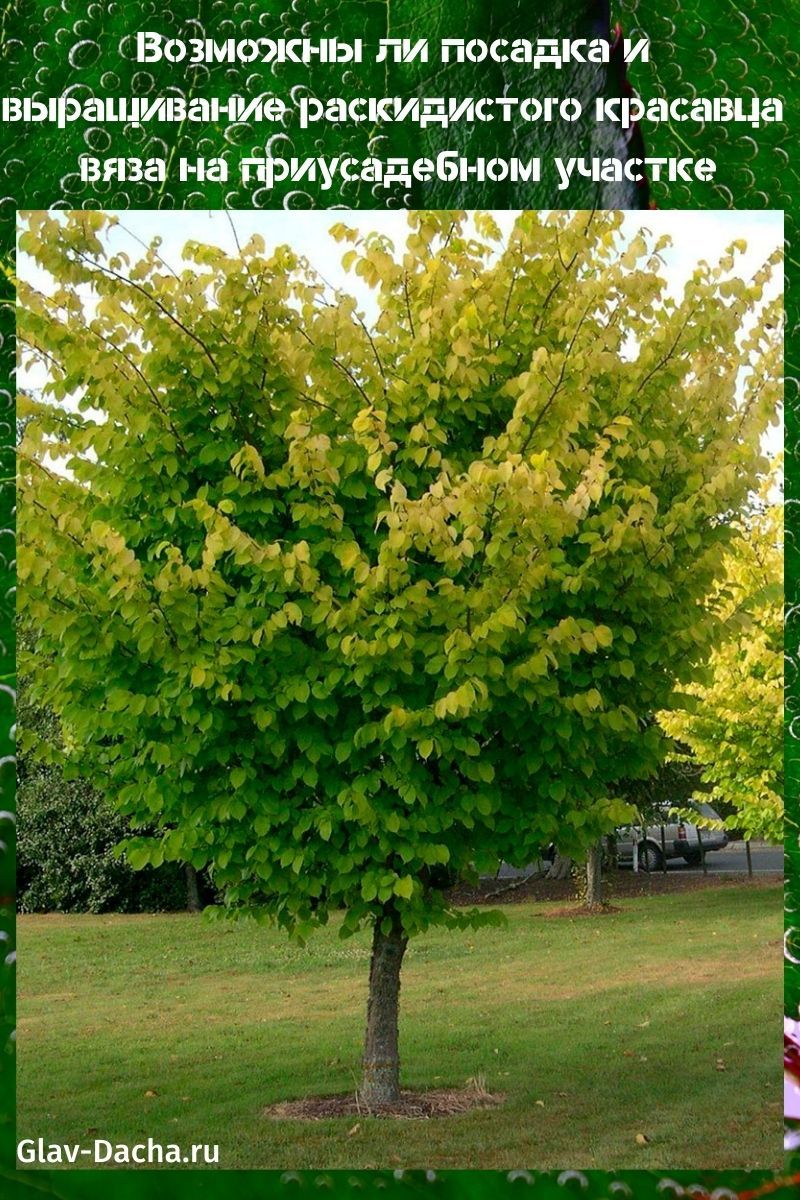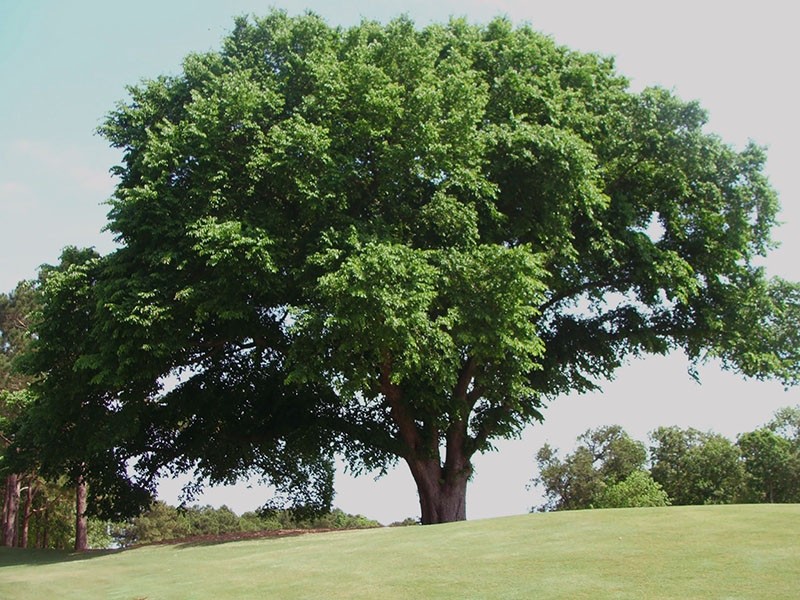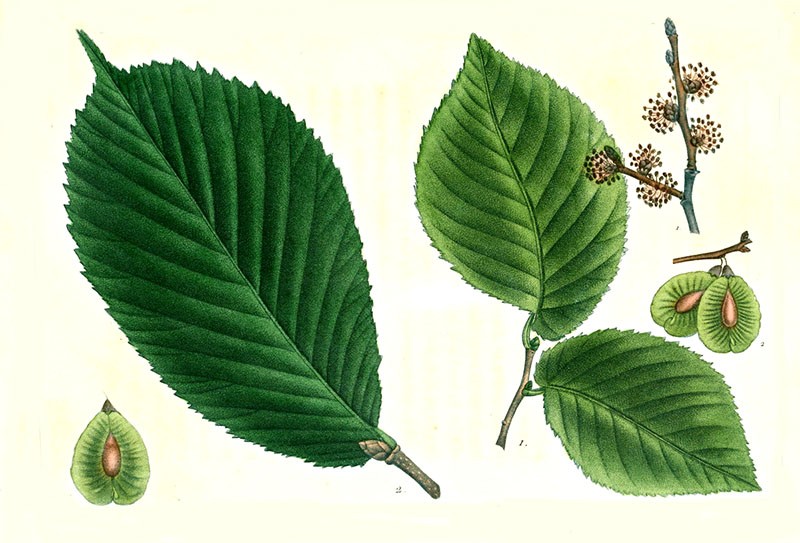Is it possible to plant and grow a sprawling handsome elm tree on a personal plot
 Imagine a spacious green canopy, under which a couple of dozen people can easily hide from the rain or hot sun and they will not be cramped. It is not difficult to make such a canopy on your site, because planting and growing an elm on the site will not cause much trouble.
Imagine a spacious green canopy, under which a couple of dozen people can easily hide from the rain or hot sun and they will not be cramped. It is not difficult to make such a canopy on your site, because planting and growing an elm on the site will not cause much trouble.
Description of the tree

 Most species are deciduous. The root system is fibrous, highly branched, individual roots go to a great depth. This makes trees thrive in arid areas.
Most species are deciduous. The root system is fibrous, highly branched, individual roots go to a great depth. This makes trees thrive in arid areas.
The bark is brown, smooth in young trees, cork growths and longitudinal cracks appear on it with age. Leaves with short petioles, serrated, begin to grow actively only after fruit ripening. Light flying achenes with a nut in the middle ripen in early summer and are easily carried by the wind. Germinate in a week under suitable conditions.
The average lifespan of an elm tree is about a hundred years. Some specimens live up to 400 years. In Europe and North America, this tree is better known as the elm. Small-leaved species of elm in the Volga region are called elm.
 The oldest elm in Russia, 450 years old, grows in the Ulyanovsk region. The tree is located on the territory of the former estate of the hero of the Patriotic War Denis Davydov. In recent years, it has become a good tradition for families to come to the estate to hold hands together and clasp the trunk. It is believed that such a ceremony can strengthen the family.
The oldest elm in Russia, 450 years old, grows in the Ulyanovsk region. The tree is located on the territory of the former estate of the hero of the Patriotic War Denis Davydov. In recent years, it has become a good tradition for families to come to the estate to hold hands together and clasp the trunk. It is believed that such a ceremony can strengthen the family.
Seed propagation of elm
 Elm propagation occurs completely without problems - by seeds, root suckers and shoots, which begin to grow abundantly near the stump after cutting the tree. In horticulture, elm is propagated by rooted cuttings.
Elm propagation occurs completely without problems - by seeds, root suckers and shoots, which begin to grow abundantly near the stump after cutting the tree. In horticulture, elm is propagated by rooted cuttings.
When planting with seeds, it must be borne in mind that they germinate successfully only in the first week after ripening. It is during these periods that the seeds should get into a humid environment. In the second week, they lose their germination by almost 100%.
 Elm seeds are sown in moist fertile soil at a distance of 35–40 cm. To retain moisture, the soil is mulched or covered with foil. To prevent the appearance of mold under the film, the crops are regularly ventilated, and the soil is sprayed with a solution Fitosporin.
Elm seeds are sown in moist fertile soil at a distance of 35–40 cm. To retain moisture, the soil is mulched or covered with foil. To prevent the appearance of mold under the film, the crops are regularly ventilated, and the soil is sprayed with a solution Fitosporin.
From the second year, they begin to form a crown. Dry, broken off or frozen branches are removed in late autumn or early spring, but the beginning of sap flow.
Cutting, planting and growing an elm
 The best time to plant cuttings is during the early summer months. Well-developed annual shoots with a thickness of 0.6-0.8 mm are taken for harvesting cuttings. Several formed buds are left on the shoot. With a sharp razor, cut the branch obliquely under the lower bud. The upper cut is made exactly.
The best time to plant cuttings is during the early summer months. Well-developed annual shoots with a thickness of 0.6-0.8 mm are taken for harvesting cuttings. Several formed buds are left on the shoot. With a sharp razor, cut the branch obliquely under the lower bud. The upper cut is made exactly.
The soil in the school is disinfected by steaming or spilled with any suitable fungicide. Fueled with a complete complex mineral fertilizer with a minimum nitrogen content.
 Before planting, the lower cut of the cutting is dipped in the Kornevin preparation, the excess powder is shaken off and carefully placed on the bottom of the groove. The cuttings are covered with a nutrient substrate so that 2-3 lower buds are underground. If necessary, cuttings are rooted in water and planted after the appearance of root rudiments.
Before planting, the lower cut of the cutting is dipped in the Kornevin preparation, the excess powder is shaken off and carefully placed on the bottom of the groove. The cuttings are covered with a nutrient substrate so that 2-3 lower buds are underground. If necessary, cuttings are rooted in water and planted after the appearance of root rudiments.
 Before the roots appear, it is necessary to constantly monitor the soil moisture. After watering, the school with cuttings is loosened to increase gas exchange at the site of the developing root system. In dry hot seasons, the garden bed is mulched with peat, rotted sawdust or hay dust.
Before the roots appear, it is necessary to constantly monitor the soil moisture. After watering, the school with cuttings is loosened to increase gas exchange at the site of the developing root system. In dry hot seasons, the garden bed is mulched with peat, rotted sawdust or hay dust.
After the appearance of leaves and new shoots on rooted cuttings, it can be considered that the first stage of planting and growing the elm is over.
How to care for an elm seedling
 At first, planting is abundantly watered. When the elm seedlings grow new branches, watering is reduced. On waterlogged soils, young elms can be harmed by Dutch disease. This is a fungal disease carried by the bark beetle. Affected trees dry up in just a few weeks.
At first, planting is abundantly watered. When the elm seedlings grow new branches, watering is reduced. On waterlogged soils, young elms can be harmed by Dutch disease. This is a fungal disease carried by the bark beetle. Affected trees dry up in just a few weeks.
To prevent infection, the following measures are taken:
- treat plantings with insecticides to destroy the bark beetle;
- dead branches are cut off from diseased seedlings;
- the cuts are coated with a 5% solution of copper sulfate;
- the entire plantation is sprayed every two weeks with a tank mixture of foliar fertilizer, antifungal agent and insecticide.
All plant residues, including cuttings of branches and stumps, must be removed from the site and burned.
In autumn, young elm saplings are examined and the strongest are selected. It's time to put them in a permanent place.
The elm is a shade-tolerant plant, but young trees can die if there is a lack of light, so open sunny places are chosen for planting and growing elms.
A hole of 50 * 50 cm is dug at the chosen place. Drainage is laid at the bottom. Broken brick, expanded clay, crushed stone will do. Coarse fractions are covered with a layer of river sand.
If the soil on the site is fertile, add to the soil selected from the pit:
- 1 tablespoon each superphosphate and potassium salt;
- 1 glass of wood ash;
- several tablets of Glyocladin or Trichodermina for the prevention of white rot.
For poor and depleted soils, the amount of fertilizer is doubled and a bucket of compost or humus is additionally added to each tree.
In the southern regions, elm seedlings are transplanted in the fall. Long warm autumn and mild winters allow them to winter without problems. In places with a more severe climate, elm seedlings are buried in a trench for the winter, and they are planted in the spring.
When and how to prune elm
 Elms tolerate pruning well and practically do not get sick. Nevertheless, sections with a diameter of more than 2 cm must be covered with pitch or oil paint. As with other ornamental plants, pruning elms can be formative, sanitary and rejuvenating.
Elms tolerate pruning well and practically do not get sick. Nevertheless, sections with a diameter of more than 2 cm must be covered with pitch or oil paint. As with other ornamental plants, pruning elms can be formative, sanitary and rejuvenating.
 With the help of regular formative pruning, it is easy to achieve a beautiful curly crown. Topiary or curly pruning, one of the interesting and original trends in landscape architecture. To create a spherical or oval crown, the tree is shaped so that the lateral branches develop faster than the conductor. The main trunk is pruned more to slow down its growth, and the lateral branches are only shortened for abundant branching.
With the help of regular formative pruning, it is easy to achieve a beautiful curly crown. Topiary or curly pruning, one of the interesting and original trends in landscape architecture. To create a spherical or oval crown, the tree is shaped so that the lateral branches develop faster than the conductor. The main trunk is pruned more to slow down its growth, and the lateral branches are only shortened for abundant branching.
Sanitary pruning is done in the spring. All broken, dry, diseased branches are cut out. Tops and branches growing at an acute angle are removed.
Rejuvenating pruning is carried out in cases of physiological aging of trees, when the annual growth practically stops. In order to rejuvenate, several large skeletal branches are cut down. The next year, dormant buds will wake up and begin to grow. Thus, the life of the tree is extended by another 5-10 years.
 Elm is a beautiful and very useful plant. Its seeds and branches are used as pet food.Blooming elm is a good honey plant and attracts bees. The dense openwork foliage traps dust, purifies the air and looks great in parks and gardens. Planting and growing an elm is a snap. The tree grows very quickly and after a few years you will be able to rest under its spreading crown.
Elm is a beautiful and very useful plant. Its seeds and branches are used as pet food.Blooming elm is a good honey plant and attracts bees. The dense openwork foliage traps dust, purifies the air and looks great in parks and gardens. Planting and growing an elm is a snap. The tree grows very quickly and after a few years you will be able to rest under its spreading crown.